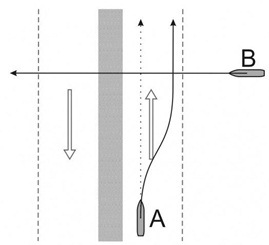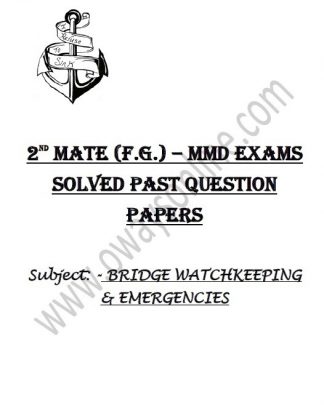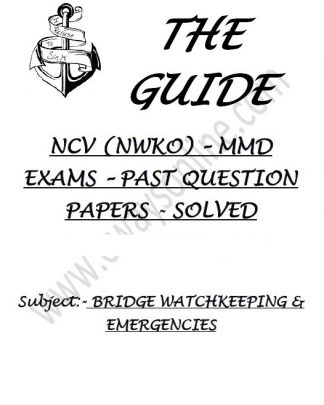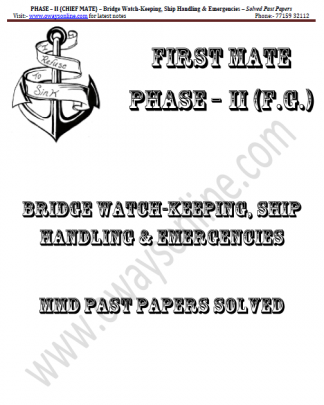Q) While transiting within a TSS you observe a vessel crossing from you Starboard side, on a Collision course. Will you leave the TSS to avoid collision?
Ans:- Crossing situation in traffic separation scheme (vessel A using traffic separation scheme has vessel B on her own starboard side)

Description of scenario TSS:
- Vessel A: power-driven vessel using traffic separation scheme
- Vessel B: power-driven vessel of 20 m or more in length crossing traffic separation scheme
- Area: Traffic separation scheme
- Visibility: Good (Vessels in sight of one another)
- Vessel A and vessel B are crossing so as to involve risk of collision
- Vessel A has vessel B on her own starboard side
Rule(s) to be applied during TSS:
- Rule 10 (Traffic separation schemes)
- Rule 15 (Crossing situation)
- Rule 16 (Action by give-way vessel)
Applying the Rule(s) and comments:
- In accordance with Rule 10 (c) (Traffic separation scheme), a vessel (vessel B) shall so far as practicable avoid crossing traffic lanes, but if obliged to do so shall cross on a heading as nearly as practicable at right angles to the general direction of traffic flow.
- In accordance with Rule 15 (Crossing situation), when two power-driven vessels are crossing so as to involve risk of collision, the vessel (vessel A) which has the other (vessel B) on her own starboard side shall keep out of the way.
- In accordance with Rule 15 (Crossing situation), vessel A shall, if the circumstances of the case admit, avoid crossing ahead of vessel B.
- In accordance with Rule 16 (Action by give-way vessel), every vessel (vessel A) which is directed to keep out of the way of another vessel (vessel B) shall, so far as possible, take early and substantial action to keep well clear.
Factors to consider before approaching and using a Traffic Separation Scheme?
Traffic Separation Scheme (Rules of the Road – Rule 10):-
- This rule applies to traffic separation schemes adopted by the Organization and does not relieve any vessel of her obligation under any other rule.
- A vessel using a traffic separation scheme shall:
- Proceed in the appropriate traffic lane in the general direction of traffic flow for that lane.
- So far as is practicable keep clear of a traffic separation line or separation zone.
- Normally join or leave a traffic lane at the termination of the lane, but when joining or leaving from either side shall do so at as small an angle to the general direction of traffic flow as practicable.
- A vessel shall so far as practicable avoid crossing traffic lanes, but if obliged to do so shall cross on a heading as nearly as practicable at right angles to the general direction of traffic flow.
- A vessel shall not use an inshore traffic zone when she can safely use the appropriate traffic lane within the adjacent traffic separation scheme. However, vessels of less than 20 meters in length, sailing vessels and vessels engaged in fishing may use the inshore traffic zone.
- Notwithstanding subparagraph (d)(i), a vessel may use an inshore traffic Zone when en route to or from a port, offshore installation or structure, pilot station or any other place situated within the inshore traffic zone, or to avoid immediate danger.
- A vessel, other than a crossing vessel or a vessel joining or leaving a lane shall not normally enter a separation zone or cross a separation line except:
- in cases of emergency to avoid immediate danger;
- to engage in fishing within a separation zone.
- A vessel navigating in areas near the terminations of traffic separation schemes shall do so with particular caution.
- A vessel shall so far as practicable avoid anchoring in a traffic separation scheme or in areas near its terminations.
- A vessel not using a traffic separating scheme shall avoid it by as wide a margin as is practicable.
- A vessel engaged in fishing shall not impede the passage of any vessel following a traffic lane.
- A vessel of less than 20 meters in length or a sailing vessel shall not impede the safe passage of a power driven vessel following a traffic lane.
- A vessel restricted in her ability to maneuver when engaged in an operation for the maintenance of safety of navigation in a traffic separating scheme is exempted from complying with this Rule to the extent necessary to carry out the operation.
- A vessel restricted in her ability to maneuver when engaged in an operation for the laying, servicing or picking up a submarine cable, within a traffic separating scheme, is exempted from complying with this Rule to the extent necessary to carry out the operation.


